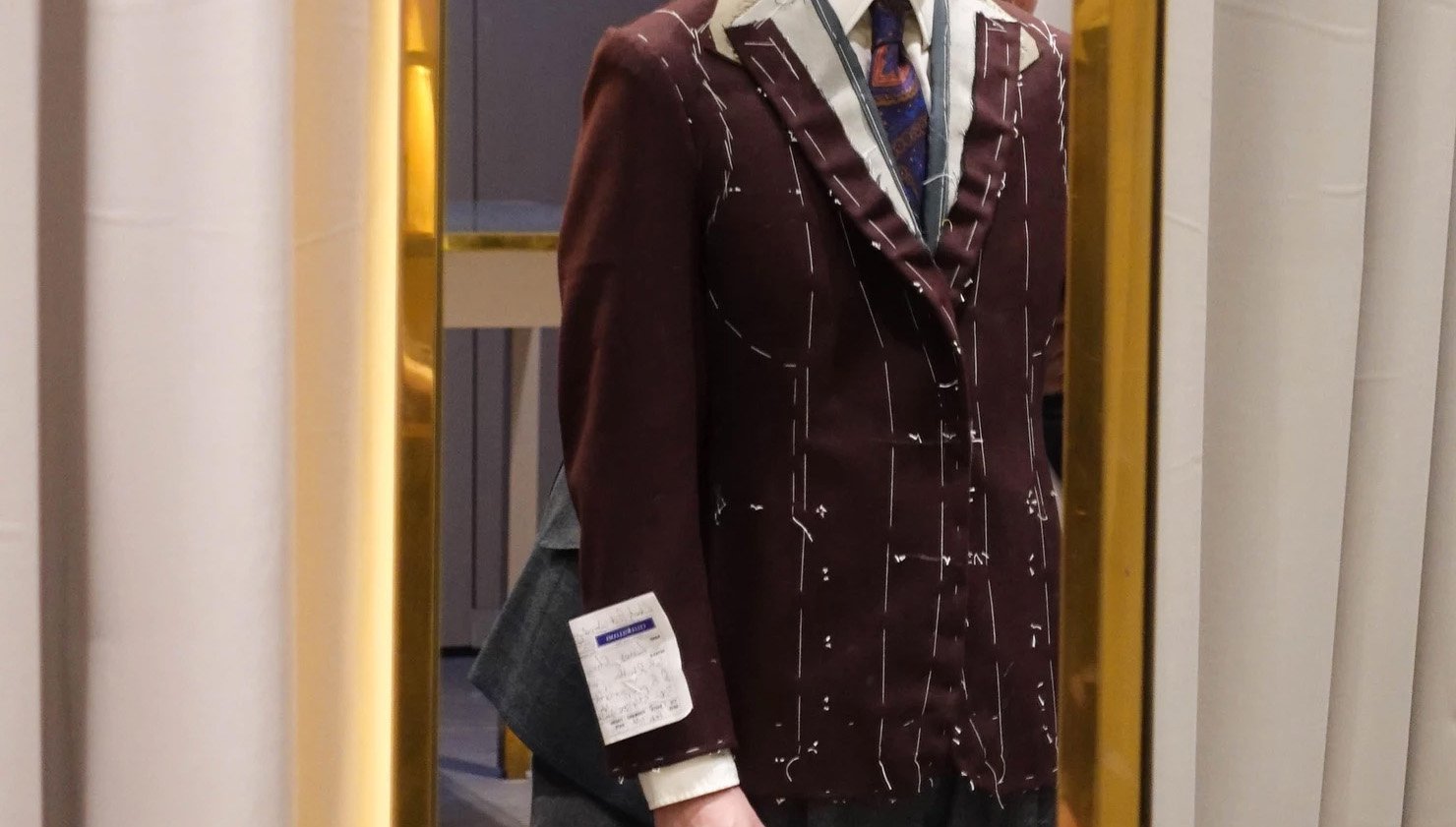Four seasons, one cut: Linus Chu Q&A
Linus Chu founded The Suitstainable Man as a platform for a nuanced voice in promoting style and craftsmanship from a sustainability perspective. As an enthusiast of classic menswear and an environmentalist, Linus is a strong supporter of slow fashion. We talked with him about how this philosophy, combining personal style with investing in eco-consciously made quality garments, contributes to a more sustainable lifestyle.
How did you first encounter Tengri?
During London Craft Week in the spring of 2019, I attended the ‘Steppe into Sustainable Style’ event hosted by Tengri. They had just collaborated with Joseph Cheaney on a limited-edition shoe, a new interpretation of the classic brogue which used Mongolian sheep wool fabric rather than cork in the sole.
Immediately, I was fascinated by the Tengri story and how it transformed the Mongolian herding community for the better. Then, of course, the fact that Tengri and I share a similar philosophy about sustainable craftsmanship made us click even more easily.
Creating a bespoke garment means navigating a minefield of decisions. How did you go about deciding which tailor to use and why did you choose Tengri fabrics?
I wanted something that had the traditional formality of the English drape cut but with less structure, soft shoulders and made without heavy canvassing. I decided to work with Tengri’s jacketing hopsack cloth in 350gsm, as the fabric has an amazing drape and the rich plum colour suited me.
I commissioned Steven Hitchcock to make my bespoke piece, as he is known for the English drape cut. He has also been in the trade for many years, meaning he would treat the cloth right even if this was my first commission with him.
On top of that, there’s a certain romanticism about supporting small businesses from start to finish. For Steven, all the cutting work is done on his premises rather than outsourced, and more importantly, by himself. This means I had 100 per cent oversight and transparency.
People tend to overlook the social aspect when it comes to the sustainability narrative. By choosing Tengri, who care deeply about the herders, and Steven Hitchcock, who is an independent tailor himself, I am at least taking an active step in fighting against the status quo.
What other considerations need to be taken into account for truly sustainable styling?
Multiple considerations, really.
First and foremost, the performance of the cloth is critical in the garment. It needs to wear well, be soft as well as durable, with longevity. Cashmere – the provenance of which is often opaque – tends to degrade after three to four years.
Secondly, the style of the garment should be able to withstand the test of time. Now, I am not saying one’s style shouldn’t evolve over time – in fact, this may even be unrealistic to call for in the first place – or that everyone should conform to the same style. However, I do think that by acquiring something that you will still wear over the next five or ten years, if not longer, you are already making an effort in reinforcing the sustainable styling paradigm.
Can you share more about styling this one coat across all four seasons? Let’s start with spring and summer.
For spring, I’d pair it with a lightweight crewneck jumper with rain-resistant wool trousers and derby shoes. Depending on my mood, I would either go for an earth-tone pocket square or a neckerchief. For summer, it pairs well with chino trousers and a breezy polo. Of course, it works marvellously with an easy-to-wear linen shirt, too.
And how about styling your Tengri coat for autumn and winter?
I’d wear it with a thin turtleneck, flannel trousers and Belgian loafers in autumn for a more casual look. When the mercury drops even lower, I would swap the thin turtleneck with a chunky one, perhaps with a shirt inside as well. As for a more formal look, I’d like to pair the jacket with a sleeveless cardigan, poplin shirt and a silk tie.
It’s fantastic to see how well loved the coat has been, and how great it looks on you. Let’s talk pockets. How did you decide which pockets to choose?
I chose patch pockets as opposed to welted or a flap pocket, to allow the coat to be as versatile as possible. I can wear it for semi-formal as well as casual occasions. The utilitarian functionality of a patch pocket is great.
Do you have any other key takeaway points for anyone new to sustainable styling?
When it comes to sustainable styling, one’s first and foremost task is to know oneself. I’m sure we’ve all heard of Coco Chanel's quote: “Fashion fades, only style remains the same.” This applies to sustainable styling as well. By understanding how you want to portray yourself in the long run, and curating a small selection of garments that genuinely resonate with you, you are reducing consumption from the start, by shortening or cutting out completely the trial-and-error phase.
Then, of course, it’s not the easiest thing to learn yourself, or your style to begin with. My advice would be to observe what you like about others’ styles – and what you don’t like! Educate yourself on how style rules come into place originally, so that you know what rules you can bend, alongside how to bend them. Rinse and repeat. Eventually, you’ll narrow down your preferences enough to have a small curation that resonates with you.
Elsewhere, always try to acquire garments to fill gaps in your wardrobe and not the other way around. Look for something specific.








